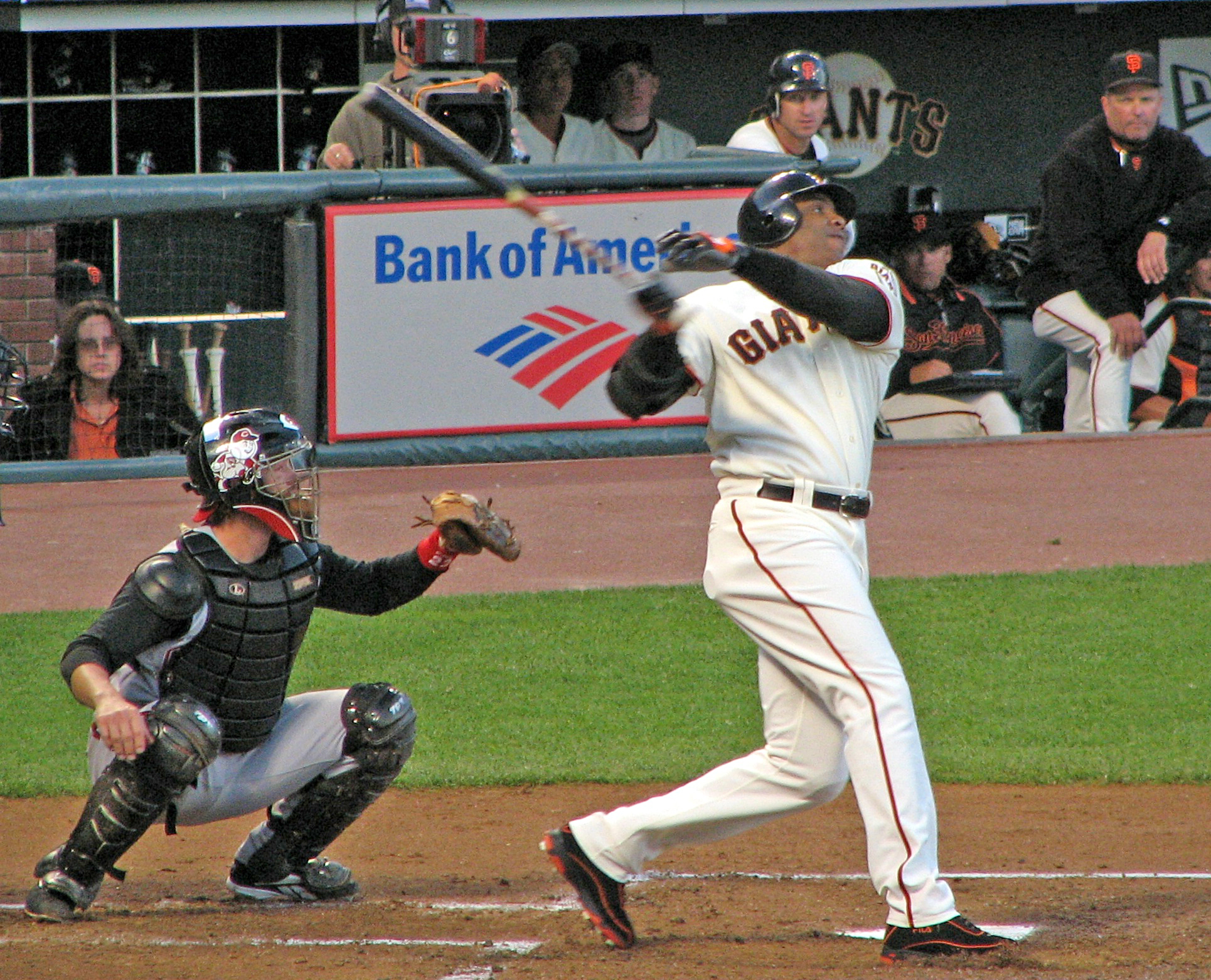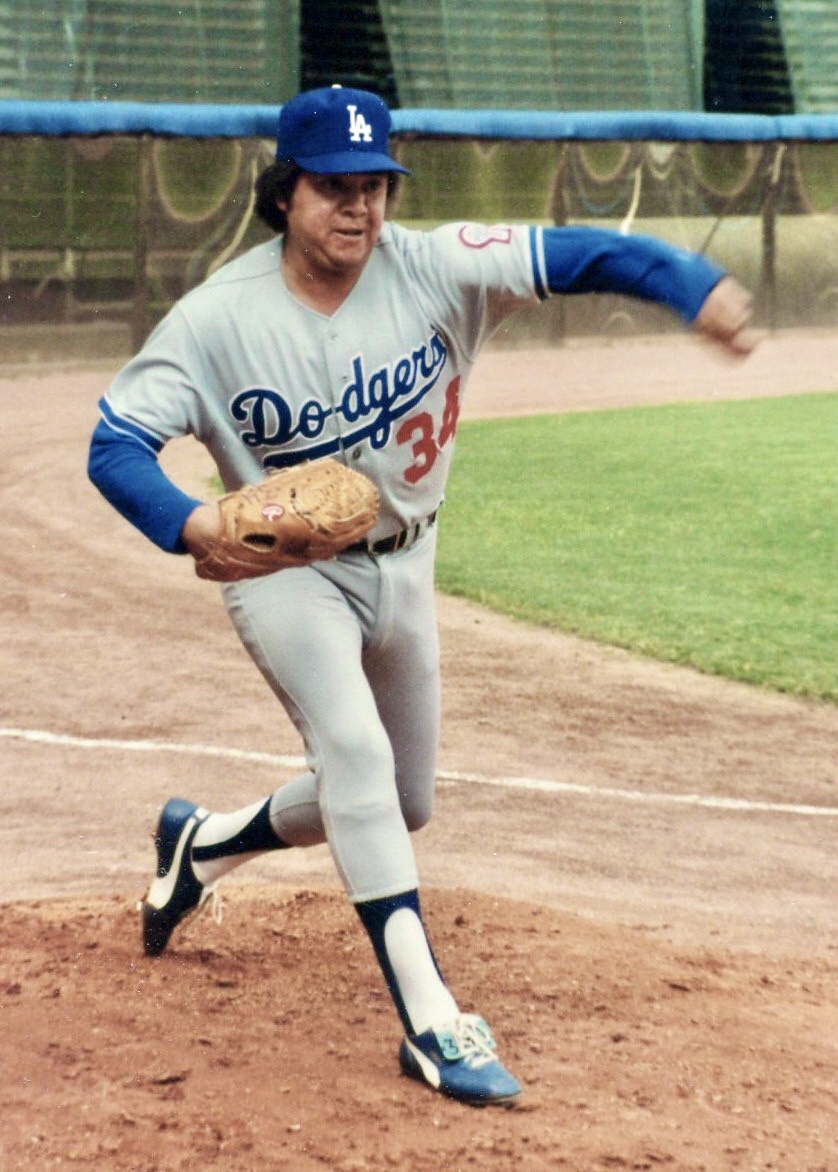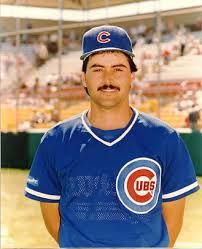|
Kevin Gross
Kevin Frank Gross (born June 8, 1961) is an American former Major League Baseball pitcher who played from 1983 through 1997. Gross played for five different teams during his career: the Philadelphia Phillies (1983–1988), Montreal Expos (1989–1990), Los Angeles Dodgers (1991–1994), Texas Rangers (1995–1996), and Anaheim Angels (1997). He made his Major League Baseball debut on June 25, 1983, pitching innings, surrendering 2 earned runs to the New York Mets en route to a 4–2 victory. He played his final game on July 25, 1997. On August 10, 1987, Gross was caught ball scuffing; he had sandpaper in his glove, and he was suspended for 10 games. He was selected to the National League All-Star team in 1988. On August 17, 1992, as a member of the Los Angeles Dodgers, Gross threw a no-hitter versus their rivals, the San Francisco Giants, in a 2-0 victory. On September 9, 1986, Gross surrendered the first of Rafael Palmeiro's 569 career home runs. On May 14, 1990, pitching f ... [...More Info...] [...Related Items...] OR: [Wikipedia] [Google] [Baidu] |
Pitcher
In baseball, the pitcher is the player who throws ("Pitch (baseball), pitches") the Baseball (ball), baseball from the pitcher's mound toward the catcher to begin each play, with the goal of out (baseball), retiring a batter (baseball), batter, who attempts to either make contact with the pitched ball or draw a base on balls, walk. In the numbering system used to record defensive plays, the pitcher is assigned the number 1. The pitcher is often considered the most important player on the defensive side of the game, and as such is situated at the right end of the defensive spectrum. There are many different types of pitchers, such as the starting pitcher, relief pitcher, middle reliever, left-handed specialist, lefty specialist, setup man, and the closing pitcher, closer. Traditionally, the pitcher also bats. Starting in 1973 with the American League and spreading to further leagues throughout the 1980s and 1990s, the hitting duties of the pitcher have generally been given over t ... [...More Info...] [...Related Items...] OR: [Wikipedia] [Google] [Baidu] |
Ball Scuffing
An emery ball is an illegal pitch in baseball, in which the ball has been altered by scuffing it with a rough surface, such as an emery board or sandpaper. This technique alters the spin of the ball, causing it to move in an atypical manner, as more spin makes the ball rise, while less spin makes the ball drop. The general term for altering the ball in any way is ''doctoring''. The emery ball differs from the spitball, in which the ball is doctored by applying saliva or Vaseline. Vaseline or saliva smooths the baseball, while the emery paper roughens it. Russ Ford discovered the emery ball in the minor leagues in 1907 when he saw what a scuff on a baseball did to its movement. He began keeping emery paper in his baseball glove. Though he initially kept the pitch a secret, he had to inform his catcher, Ed Sweeney, about it. Sweeney taught it to other pitchers, and the pitch was discovered when an umpire found emery paper in Ray Keating's glove in 1914. The pitch was outlawed, whi ... [...More Info...] [...Related Items...] OR: [Wikipedia] [Google] [Baidu] |
No-hitter
In baseball, a no-hitter or no-hit game is a game in which a team does not record a hit (baseball), hit through conventional methods. Major League Baseball (MLB) officially defines a no-hitter as a completed game in which a team that batted in at least nine complete innings recorded no hits. A pitcher who prevents the opposing team from achieving a hit is thereby said to have "thrown a no-hitter". In most cases, no-hitters are recorded by a single pitcher who throws a complete game; one thrown by two or more pitchers is a combined no-hitter. A no-hitter is a rare accomplishment for a pitcher or pitching staff—only 326 have been thrown in MLB history since 1876, an average of about two per year. The most recent major league no-hitter and combined no-hitter was thrown by starter Shota Imanaga and relief pitchers Nate Pearson and Porter Hodge of the Chicago Cubs against the Pittsburgh Pirates on September 4, 2024, while the most recent no-hitter by a single pitcher was thrown by ... [...More Info...] [...Related Items...] OR: [Wikipedia] [Google] [Baidu] |
List Of Major League Baseball No-hitters
Below is a list of Major League Baseball no-hitters, enumerating every no-hitter pitched in Major League Baseball history. The list also includes no-hit games that were broken up in extra innings or were in shortened games, although they have not been considered official no-hitters since 1991. Through September 4, 2024, there have been 326 no-hitters recognized by Major League Baseball (MLB): 43 before the formation of the American League in 1901, and the rest in the modern era. Three other games are also noted: one in 1875 by Joe Borden that is accepted as a no-hitter in the National Association but not as a major league game, one in 1876 by Borden that is disputed and not recognized by MLB, and one in 1901 by Pete Dowling that is also disputed and not recognized by MLB. The first no-hitter officially recognized by MLB was pitched by George Bradley on July 15, 1876, during the first season of play in the National League. The most recent major league no-hitter was thrown by ... [...More Info...] [...Related Items...] OR: [Wikipedia] [Google] [Baidu] |
Bases On Balls
A base on balls (BB), better known as a walk, occurs in baseball when a batter receives four pitches during a plate appearance that the umpire calls '' balls'', and is in turn awarded first base without the possibility of being called out. The base on balls is defined in Section 2.00 of baseball's Official Rules, and further detail is given in 6.08(a). Despite being known as a "walk", it is considered a faux pas for a professional player to actually walk to first base; the batter-runner and any advancing runners normally jog on such a play. The term "base on balls" distinguishes a walk from the other manners in which a batter can be awarded first base without liability to be put out (e.g., hit by pitch (HBP), catcher's interference). Though a base on balls, catcher's interference, or a batter hit by a pitched ball all result in the batter (and possibly runners on base) being awarded a base, the term "walk" usually refers only to a base on balls, and not the other methods of re ... [...More Info...] [...Related Items...] OR: [Wikipedia] [Google] [Baidu] |
Run Batted In
A run batted in or runs batted in (RBI) is a statistic in baseball and softball that credits a batter for making a play that allows a run to be scored (except in certain situations such as when an error is made on the play). For example, if the batter bats a base hit which allows a teammate on a higher base to reach home and so score a run, then the batter gets credited with an RBI. Before the 1920 Major League Baseball season, runs batted in were not an official baseball statistic. Nevertheless, the RBI statistic was tabulated—unofficially—from 1907 through 1919 by baseball writer Ernie Lanigan, according to the Society for American Baseball Research. Common nicknames for an RBI include "ribby" (or "ribbie"), "rib", and "ribeye". The plural of "RBI" is a matter of "(very) minor controversy" for baseball fans:; it is usually "RBIs", in accordance with the usual practice for pluralizing initialisms in English; however, some sources use "RBI" as the plural, on the basis ... [...More Info...] [...Related Items...] OR: [Wikipedia] [Google] [Baidu] |
Home Runs
In baseball, a home run (abbreviated HR) is scored when the ball is hit in such a way that the batter is able to circle the bases and reach home plate safely in one play without any errors being committed by the defensive team. A home run is usually achieved by hitting the ball over the outfield fence between the foul poles (or hitting either foul pole) without the ball touching the field. Inside-the-park home runs where the batter reaches home safely while the baseball is in play on the field are infrequent. In very rare cases, a fielder attempting to catch a ball in flight may misplay it and knock it over the outfield fence, resulting in a home run. An official scorer will credit the batter with a hit, a run scored, and a run batted in (RBI), as well as an RBI for each runner on base. The pitcher is recorded as having given up a hit and a run, with additional runs charged for each base-runner that scores. Home runs are among the most popular aspects of baseball ... [...More Info...] [...Related Items...] OR: [Wikipedia] [Google] [Baidu] |
Run (baseball)
In baseball, a run is scored when a player advances around first, second and third base and returns safely to home plate, touching the bases in that order, before three outs are recorded and all obligations to reach base safely on batted balls are met or assured. A player may score by hitting a home run or by any combination of plays that puts him safely "on base" (that is, on first, second, or third) as a runner and subsequently brings him home. Once a player has scored a run, they may not attempt to score another run until their next turn to bat. The object of the game is for a team to score more runs than its opponent. The Official Baseball Rules hold that if the third out of an inning is a force out of a runner advancing to any base then, even if another baserunner crosses home plate before that force out is made, his run does not count. However, if the third out is not a force out, but a tag out, then if that other baserunner crosses home plate before that tag out i ... [...More Info...] [...Related Items...] OR: [Wikipedia] [Google] [Baidu] |
Batting Average (baseball)
In baseball, batting average (BA) is determined by dividing a player's hits by their total at-bats. It is usually rounded to three decimal places and read without the decimal: A player with a batting average of .300 is said to be "batting three hundred". If necessary to break ties, batting averages could be taken beyond the .001 measurement. In this context, .001 is considered a "point", such that a .235 batter is five points higher than a .230 batter. History Henry Chadwick, an English statistician raised on cricket, was an influential figure in the early history of baseball. He is credited with creating the modern box score, in 1859, and the practice of denoting a strikeout with a "K". Chadwick wrote in 1869: "In making up a score at the close of the match the record should be as follows:–Name of player, total number of times the first base was made by clean hits, total bases so made, left on bases after clean hits, and the number of times the first base has been made on ... [...More Info...] [...Related Items...] OR: [Wikipedia] [Google] [Baidu] |
Fernando Valenzuela
Fernando Valenzuela Anguamea (; November 1, 1960 – October 22, 2024), nicknamed "El Toro", was a Mexican professional baseball pitcher. Valenzuela played 17 Major League Baseball (MLB) seasons, from 1980 to 1997 (except for a one-year sabbatical in Mexico in 1992). He played for six MLB teams, most prominently with the Los Angeles Dodgers, who signed him in 1979 and gave him his MLB debut in 1980. Valenzuela batted and threw left-handed, with an unorthodox windup. He was one of a small number of pitchers who regularly threw a screwball in the modern era. Valenzuela enjoyed his breakout year in 1981, when "Fernandomania" rapidly catapulted him from relative obscurity to stardom. He won his first eight games started, starts, five of them shutout (baseball), shutouts, and finished with a win–loss record of 13–7 and had a 2.48 earned run average (ERA) in a season that was shortened by 1981 Major League Baseball strike, a player's strike. He became the first, and as of 2024, ... [...More Info...] [...Related Items...] OR: [Wikipedia] [Google] [Baidu] |
Home Run
In baseball, a home run (abbreviated HR) is scored when the Baseball (ball), ball is hit in such a way that the batting (baseball), batter is able to circle the bases and reach home plate safe (baseball), safely in one play without any error (baseball), errors being committed by the Defense (sports), defensive team. A home run is usually achieved by hitting the ball over the outfield fence between the foul poles (or hitting either foul pole) without the ball touching the Baseball field, field. Inside-the-park home runs where the batter reaches home safely while the baseball is in play on the field are infrequent. In very rare cases, a fielder attempting to catch a ball in flight may misplay it and knock it over the outfield fence, resulting in a home run. An official scorer will credit the batter with a hit (baseball), hit, a Run (baseball), run scored, and a run batted in (RBI), as well as an RBI for each Base running, runner on base. The pitcher is recorded as having given u ... [...More Info...] [...Related Items...] OR: [Wikipedia] [Google] [Baidu] |
Rafael Palmeiro
Rafael Palmeiro Corrales (born September 24, 1964) is a Cuban-American former baseball first baseman and left fielder. He played 20 seasons in Major League Baseball (MLB) for three teams. Palmeiro was an All-American at Mississippi State University before being drafted by the Chicago Cubs in 1985. He played for the Cubs (1986–1988), Texas Rangers (1989–1993, 1999–2003), and the Baltimore Orioles (1994–1998, 2004–2005). He was named to the MLB All-Star Team four times, and won the Gold Glove three times. He is one of only seven players in MLB history to be a member of both the 500 home run club and the 3,000 hit club. Days after recording his 3,000th hit, Palmeiro received a 10-game suspension for testing positive for an anabolic steroid. Early life Palmeiro was born in Havana, Cuba, but moved to the United States at the age of seven. He graduated from Miami Jackson High School in Miami, Florida. Although he was drafted by the New York Mets in the 8th round of th ... [...More Info...] [...Related Items...] OR: [Wikipedia] [Google] [Baidu] |








